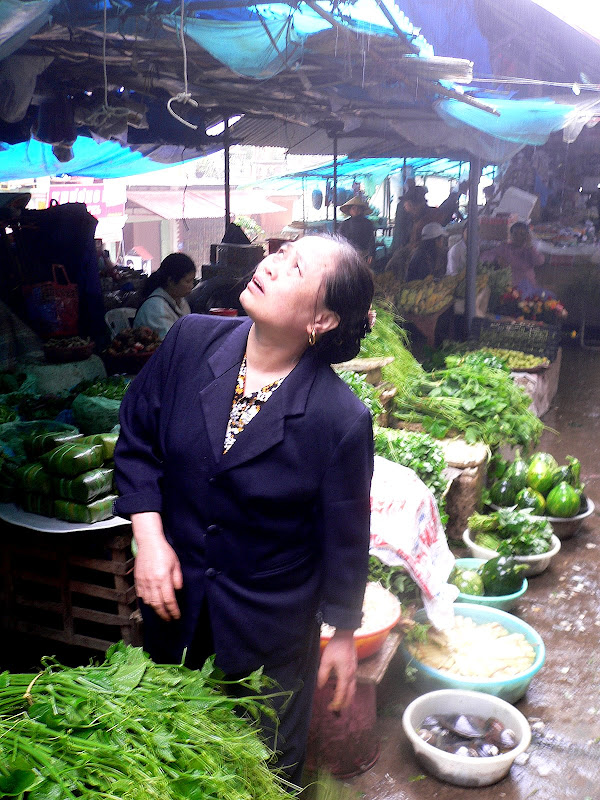  
It was a misty wet rainy morning when we arrived in Sa Pa. After checking in at the Bamboo Hotel, our tour group of six - two of us, Z and I, from Singapore, three school teachers from Spain, one middle-aged gentle giant from France who muttered only French - were greeted by our local guide, Le Thi Vu, a feisty precocious gregarious 19-year-old Black Hmong girl, sporting an attitude and an electric pink umbrella. She could really hold her own. Besides Vietnamese and the Hmong dialect, she spoke English, a smattering of French and could hurl greetings (and insults) in at least another half a dozen different tongues.   |
Unlike the rest of Vietnam where the Kinh ethnic race predominates, minority peoples like Hmongs and Dzaos prevail in Sa Pa. Mass tourism has transformed the lives and livelihoods of these erstwhile agrarian minority races immutably. Garbed in traditional wear and garish modern rubber galoshes, Hmong women and girls thronged the streets of Sa Pa town, plying indigenous textiles and silverware. Women wore their ethnic costumes proudly. These were espoused for their functionality and comfort, as well as the unique colours and ornamentation that identified the different tribes - Black Hmong in indigo black; Flower Hmong and Red Dzao decked in floral print and vermillion headgears, respectively. Most men eschewed them and donned modern apparel instead. At Cho Sa Pa, the central market, stall owners glanced worriedly skyward as the inchoate drizzle threatened to turn into a downpour. Ensconced in the two-storied market building, the women busily sewed and embroidered, making handicrafts for sale to tourists. The rain brought more customers, all seeking shelter from the heavy showers.   |
   |
The next day, weather improved. At the sides of Sa Pa Town Square, many minority peoples set up stalls selling handicraft, fruits and food. Z bought an embroidered cap from these women at an unbelievably low price of 10,000 VND! I wondered how long it took them to hand-make the cap. After breakfast, we went on a trekking excursion to Lao Chai and Ta Van villages. Along the way, we were joined by many Red Dzao and Black Hmong women hill guides. They trailed us throughout, sometimes helping to steady us and prevent many a nasty fall as we trudged clumsily on the interminable slippery muddy dirt tracks. Of course, at the end, they cajoled us to buy handicrafts from them. The items were all familiar - dyed textiles embroidered bags and caps, silver jewellery - and could be purchased in Sa Pa town at more reasonable prices, too. Market-fatigued and souvenir-weary, I wondered how this cottage economy could be sustainable with everyone selling the same stuff!  |
  |
The natural beauty in the valleys towns of Lao Chai and Ta Van was astounding. But the living was hard. We walked past the squat building that functioned as the village school. Classes have temporarily closed for summer. Only a straggling of resident teachers and fewer students remained in the largely empty classrooms. A tiny room at the corner was the village dispensary. There was no hospital nearby. The dispensary provided makeshift basic healthcare to the surrounding villagers. It was closed that day, a Saturday. The doors were firmly shuttered, and the narrow entrance was guarded by two desultory mongrel dogs. The treacherous village dirt roads were impassable to vehicles. Loads and provisions had to be carried manually. A diminutive Hmong woman, slouched low, bore on her shoulders a load of tied-up plant leaves that was twice her weight. The leaves were meal for the family buffalo. Who now was the beast of burden? |
Labels: ladies, people, Vietnam



